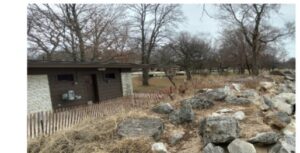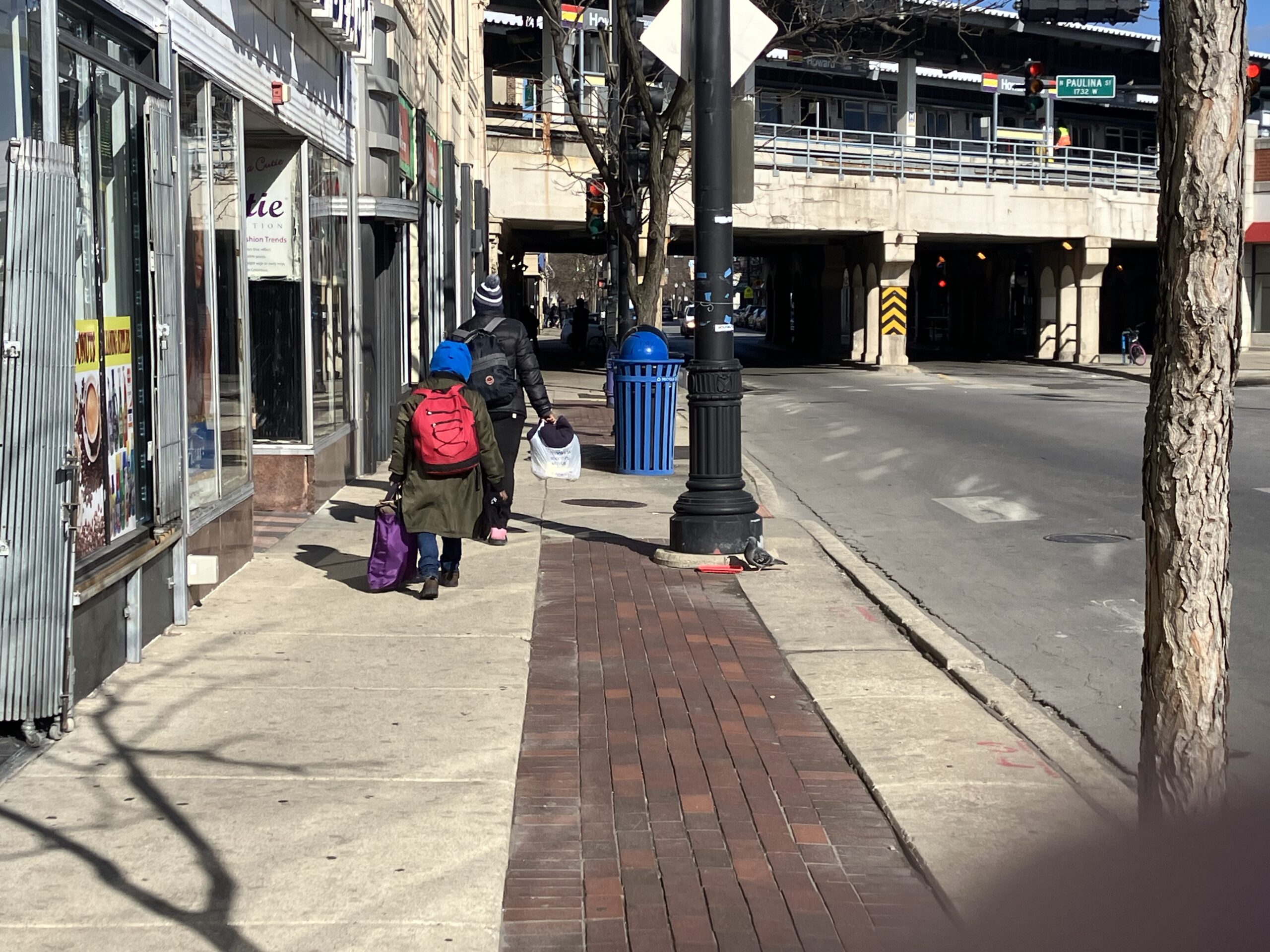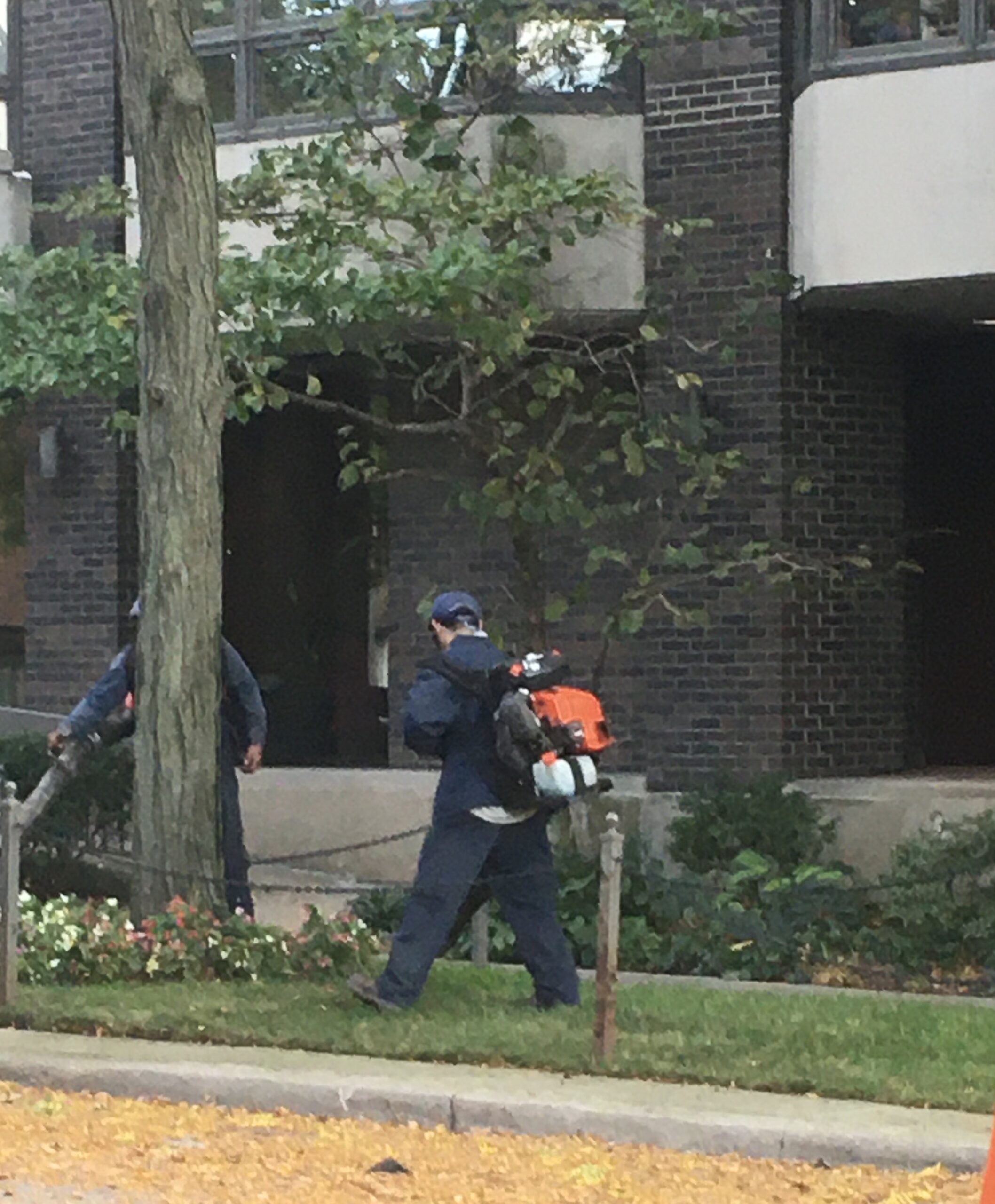
City exploring federal funds to repair lakefront damage
By Bob Seidenberg
City officials are considering contracting with a firm to assess the infrastructure damage caused by storms and high wave action this past winter, in a first step in what could involve major costs to stabilize that area.
At the Feb. 10 City Council meeting, officials led a discussion with Council members about the plan, recommending that aldermen enter into a contract to assess damage to the revetment — the rock wall which runs along the area — and as well as to some of the groin walls.
The groin walls extend perpendicularly from the beach into the lake and help preserve the beaches, staff explained.
At the meeting, Bureau Chief of Capital Planning and City Engineer Lara Biggs told aldermen that between 2013 and 2018, Lake Michigan water levels went from a record low to a near-record high, rising six-and-a- half feet.
“We are essentially in a period of five years of excessive precipitation and that’s been driving lake levels up,” she said in her report.
Ups and downs
Officials first noted the rise in lake levels with the City’s Dog Beach (located at Church Street on the lakefront.)
“The dog beach was not always a beach,” Ms. Biggs noted, using photographs of the area to demonstrate her points. “At some point it appeared the lake levels went down. When the lake levels came back up, the Dog Beach disappeared.”
“Last summer we noticed that there were some issues with the revetment, which is the rock wall that borders the lakefront between the parks,” she said. “And then generally because of the higher water levels we were seeing that the beaches themselves were getting narrower and narrower.”
With those changes, officials reached out to the U.S. Army Corps of Engineers, which sent out representatives last September to meet with staff “to inspect several areas where the damage was known to be occurring,” said Ms. Biggs.
The Corps report to the City in October recommended a number of steps to buttress the area, including the “replacement/resettling of displaced stones; and the placement of additional rock in the revetment and groin walls at various places to repair the walls and provide reinforcement against future wave action,” Ms. Biggs said in her report.
The Corps report also called for “extension of the existing revetment to provide protection against the wave action to new areas, as well as removal of all vegetation that is growing in or on the revetment and contributing to its destabilization,” she said.
Though the Corps report “has been very helpful in clarifying the problem areas and potential solutions, it is not detailed enough to understand and complete the needed repairs,” said Ms. Biggs, recommending the City move forward with a more detailed study.
Staff would like to enter into a contract with a consulting firm to assess the lakefront revetment and groin walls for damage, and provide guidance on the contracts needed for repairs and also to assist with obtaining permitting for the work, she said.
Other communities
Officials are also reaching out to other shoreline communities, as well as Northwestern University, to see if they would like to partake in some of the funding and mitigation actions resulting from the storm damage, said Kimberly Kull, the City’s Fire Division Chief and Emergency Preparedness Manager, following Ms. Biggs in the presentation.
Cook County is now working on declaring a disaster for six communities – Chicago, Wilmette, Winnetka, Glencoe, Kenilworth as well as Evanston — because of damage sustained in storms, she said.
Chicago was already looking at declaring a state of emergency after a January 10th storm but was unable to meet the $20.4 million threshold to be able to declare an emergency on their own, Division Chief Kull told Council members.
Cook County, meanwhile, was looking to reach out and see what other communities along the lakefront were impacted, she said.
As of a few days ago, Chicago was currently at $25 million in damages and “we have at least another $12 million in the five other communities,” Division Chief Kull said.
Officials are looking at two source of funds – a public assistance program which would only cover repairs –and a hazard mitigation grant program — which covers the rebuilding of the revetment, she said.
The mitigation funding would go toward the rebuilding of the underlying structure to the revetment, to help stabilize the rock wall, and that alone would cost around $33 million, Division Chief Kull said.
“Additionally, there are groin walls that need to be installed to help prevent the north-south wave action,” she said, estimating that cost at around $8.5 million.
“We’re looking at federal funds to help satisfy that need,” she told aldermen. “Unfortunately, we’re just going to have to address it at some point in time, in some way.”



